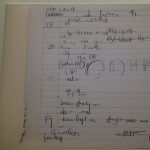Stoplight Study Technique: How to Make It Work for You

The Stoplight Study Technique is one that we don’t feel gets enough attention. This simple yet brilliantly visual tactic is so easy to set up, and it helps grow your understanding in a variety of topics.
In this article, we will take a deeper dive into what that means, how to use it, and why exactly it works so well. Let’s get started!
What Is the Stoplight Study Technique?
The Stoplight Study Technique is named because of how it makes you break down your understanding of a subject. Basically, you have three classifications to make.

What you know, what you think you know, and what you don’t know at all (or at least not enough to demonstrate proficiency at it). These three areas are akin to a traffic signal.
Red means stop. Yellow means proceed with caution. Green means go. It’s not hard to see the parallels between these colors and how it relates to your studies.
Fortunately, it’s just as easy to implement. And that’s what we’ll be covering in the next section.
How to Implement
Using the Stoplight Study Technique to your advantage means having the right physical tools and supplies in place. It also means being extremely honest with yourself.
To do it, you’ll have to get out of the mindset of what you “think” or “believe” and focus on facts. There are six steps for doing this effectively.
1. List All Key Concepts in the Chapter
Each chapter or unit of study can be broken down into multiple parts. For help doing this, take a look at any textbook you’re currently using. It’s likely the chapter is broken down into sections with their own subheadings.
Use these subheadings as a way of delineating all the key concepts that are going to be covered (or that you’ve already went over) in a given chapter. Now neatly write each one out from the top to the bottom of the page.
These are the concepts and topics that you’ll be evaluating in the next section. As you evaluate, keep coming back to that stoplight metaphor. Which of these topics will give you pause? Which ones will stump you completely?
2. Make Three Columns
It’s time to make the housing for your stoplights. You can do this in the form of three columns. What makes this technique so great is that you can do it on a sheet of paper or software program with the same effect.
At the top of each column, label it Red, Yellow, and Green. Green is pretty easy to evaluate. You see the topic and have instant familiarity, knowing the full workings of how to operate it. If you were given a test on a Green topic, you’d have an A.
Yellow could lead to more careful discernment. You think about the elements of the topic with which you’re familiar. However, there will be other elements that are foreign to you. Basically, if you were given a test on a Yellow topic, you’d probably score a B or C.
Finally, there’s Red. Why Red? Because these topics will stop you dead in your tracks. If given an exam on Red topics, you might get a couple of things right from mere chance, but a D or high F is the best you’d be able to do.
3. Go Down the List
Now you have everything you need to implement the Stoplight Study Technique. All you have to do is go down the page or screen and assign a color mark under the appropriate column.
Doing this on a sheet of paper? Spice it up by bringing in some colored dot stickers to further emulate stoplights. You can also just check or mark an X under the appropriate color column for each row.
4. Deconstruct the Topic
Once finished, take an overview of the items you marked Yellow and Red. For the rest of the time you spend studying this unit, you’ll want to break down these topics into their parts.
That means extrapolating your understanding of the concept completely. For example, let’s look at fractions. Maybe simple addition and subtraction of fractions come easy for you. However, you stumble when it comes to multiplying and dividing.
You’ve now broken that topic — FRACTIONS — down into four smaller topics. These four smaller topics give you a clearer idea of where your understanding falters. Now you know you don’t have to study everything from scratch. You can instead hone in on the areas that give you the most trouble.
5. Create a New Stoplight System
Repetition is a helpful tool when it comes to understanding a key concept. Therefore, don’t be afraid to replicate the same technique over and over again until you start to understand the diagnosis and remedy for your lack of understanding.
We recommend isolating one of these troublesome areas and doing a completely new stoplight system. That means a different page or screen for what you’ll be evaluating.
It also means new subtopics, new Reds, Yellows, and Greens. You can keep doing this until you have a thorough understanding of the study topic.
6. Rinse and Repeat Till You’ve Got It
Once you’ve gotten the hang of things, you’ll want to use it again and again. It’s something that can be transferred from one topic to another, no matter how different they seem!
Why It Works
Before closing out this article, let’s take one final look at what makes the Stoplight Study Technique so effective. Basically, there are three reasons that we’ll cover briefly below.
- Non-threatening: the tool is primarily diagnostic. No one will be grading how well you’re able to use it. Evaluation only happens on the homework, exams, and projects that come out of your understanding.
- Forces consideration of how well one truly knows something: sometimes people think they know something better than they actually do, while at other times, the remember more about the topic than they previously thought. The tool forces you to slow down and really consider things.
- Zeroes in on specific problem areas: doing that higher-level thinking forces you to isolate the areas of struggle. Ignore them at your own risk.
Give the technique a try by starting with something simple. Then, move out to more complex topics.
Are You Ready to Employ the Stoplight Study Technique?
The Stoplight Study Technique is a nice visual aid for being able to slow down and really consider what you know and what you don’t. That understanding is important if you ever hope to grow in a subject area or career.
Now it’s your turn, Everyone. What are some cool little study techniques that have helped you grasp difficult concepts? Share in the comments section below!
[Featured Image by Pixabay]








